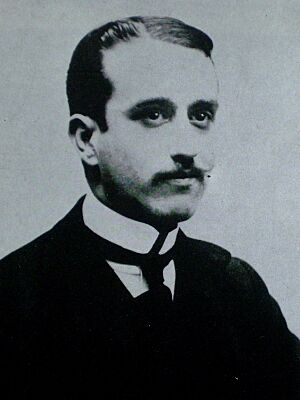Félix Faustino Outes facts for kids
Félix Faustino Outes was a famous scientist from Argentina. He was born on July 29, 1878, and passed away in 1939. He studied many interesting things, like ancient people, old objects, and languages. This means he was an anthropologist, an archeologist, and a linguist.
About His Life
Félix Faustino Outes was born in Buenos Aires, Argentina. He went to school at the Colegio Nacional de Buenos Aires. Later, he studied at the University of Buenos Aires. In 1899, he finished his studies and earned a medical degree.
Even when he was young, Outes was very interested in studying people and their cultures. In 1897, he wrote a book called Los Querandíes. This book was about an old Argentine tribe.
He traveled to France to learn even more. There, he studied at the École d'Anthropologie in Paris. He also became a member of important groups like the Royal Anthropological Institute. In 1903, he started working at the Bernardino Rivadavia Natural Sciences Museum. He worked there until 1911.
Outes became a professor at the University of La Plata. He taught about different cultures, ancient people, and old objects. Many of his most important writings come from this time.
In 1914, he joined the University of Buenos Aires. He taught about how humans live on Earth. By 1930, he became the head of the Archaeology Department.
He started the Geographic Investigations Institute in 1917. From 1930 to 1938, he was in charge of the Anthropology and Ethnography Museum of Buenos Aires. He also helped create the Argentine Society of Anthropology.
Félix Faustino Outes died in 1939 when he was 61 years old.
His Books and Studies
Félix Faustino Outes wrote many important books and studies. Here are some of them:
- Contribución al estudio de la etnología argentina (1897–98)
- La edad de piedra en la Patagonia (1905)
- Las viejas razas argentinas (1910)
- Los aborígenes del la República Argentina (1910)
He also worked with other scientists:
- He helped with Los restos indígenas de Pichilemu by José Toribio Medina (1908).
See also
 In Spanish: Félix Faustino Outes para niños
In Spanish: Félix Faustino Outes para niños


